Welcome to our blog on “Growing Green: The Secrets Behind Successful Greenhouse Farming Techniques in Sweden.” This article delves into the fascinating world of greenhouse farming in Sweden and explores the key techniques contributing to its success.
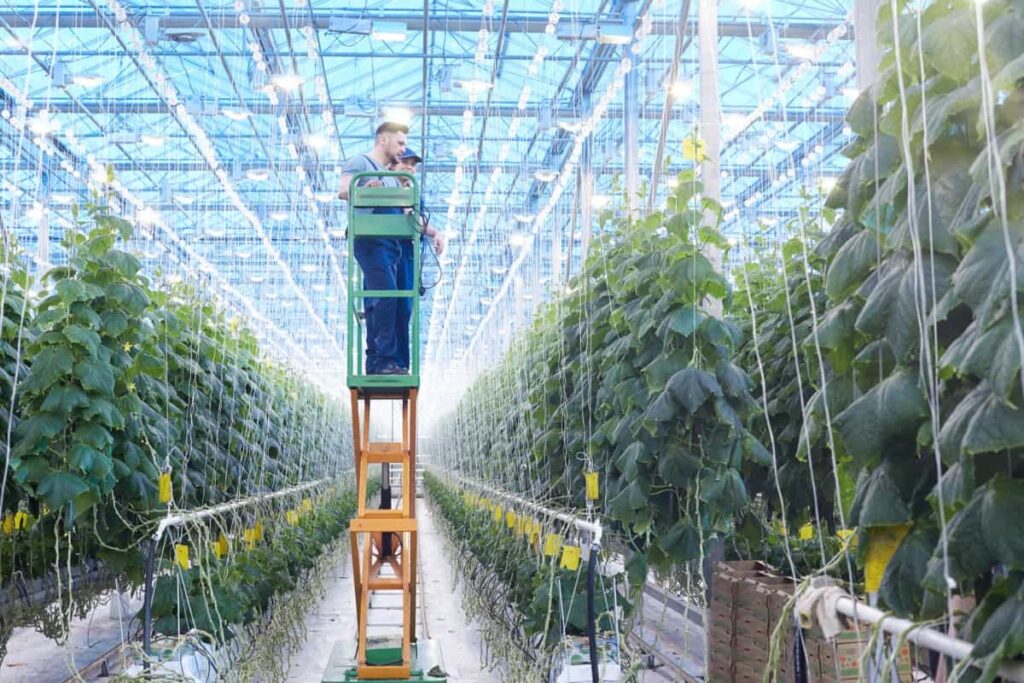
With a combination of innovative practices and a commitment to sustainability, Sweden’s greenhouse farmers have created an efficient and eco-friendly agricultural system. These practices have yielded impressive results from advanced climate control systems that optimize growing conditions to carefully selecting crops for maximum yield.
Sweden Greenhouse Growers and Agriculture
In 2017, Sweden had 1,952 professional horticultural holdings, with over 14,800 employees engaged in this industry. Of these, 1,555 holdings practiced open-ground cultivation on a vast expanse of 12,807 hectares. Meanwhile, 744 holdings focused on greenhouse cultivation, utilizing just over 286 hectares of land. Looking at the open ground area, approximately 59% was dedicated to vegetable cultivation, while berry, fruit, and ornamental plant cultivation occupied 24%, 13%, and 4%, respectively.
As for the greenhouse area, it was fairly evenly divided between ornamental plants and vegetables or berries. The major crops in terms of area in 2017 were strawberries, carrots, apples, onions, and iceberg lettuce, listed in descending order. Deciduous trees took the lead for ornamental plants, occupying just over 48% of the available open ground area. Some crops showed significant changes in production compared to previous years.
Cauliflower, broccoli, onions, and pumpkins had unusually high harvests, while spinach and dill production decreased by 93% and 52%, respectively, mainly due to reduced demand from the food industry. Apples also experienced a notable decline in yield due to a frosty spring, but an increase in cultivated apple area mitigated the overall decrease. Swedish greenhouse production has been focusing on energy efficiency and renewable fuels.
However, in 2017, the progress in energy efficiency halted, resulting in a 4% increase in relative energy use to 210 kWh per square meter compared to 2014. Nonetheless, there was a positive trend in transitioning towards renewable fuels, with the share of energy from renewable sources increasing from 48% to 57% during the same period. Agriculture in Sweden varies across regions due to differences in soil and climate.
The northern and mountainous parts of the country are more suitable for forestry than agriculture due to shorter growing seasons. However, the southern tip of Sweden is the most agriculturally productive, benefiting from the longest growing season, exceeding 240 days in some areas. Southern Sweden cultivates crops like wheat, rapeseed, and sugar beet. At the same time, barley and oats are more common in the northern regions, primarily for animal feed, particularly for pigs and poultry.
Types of Greenhouses in Sweden
Sweden boasts various greenhouse shapes, each designed to suit specific needs. The most common shapes include the classic even-span, the economical quonset, the versatile gothic arch, and the spacious gutter-connected greenhouse. These structures are designed to endure harsh weather conditions while ensuring optimal sunlight exposure for crop growth.
- Polyethylene Greenhouses: Polyethylene greenhouses are cost-effective and widely used in Sweden. They are easy to assemble and offer adequate insulation, maintaining favorable crop temperatures.
- Glass Greenhouses: Glass greenhouses are favored for their durability and aesthetic appeal. They provide excellent light transmission, creating an ideal environment for delicate crops.
- High-Tunnel Greenhouses: High-tunnel greenhouses are temporary structures that extend growing seasons for seasonal crops, offering protection against frost and pests.
- Shade Houses: Shade houses regulate excessive sunlight exposure, especially during hot summers, safeguarding crops from damage.
In case you missed it: Boosting Crop Yields and Income: A Guide to Greenhouse Farming in Tanzania
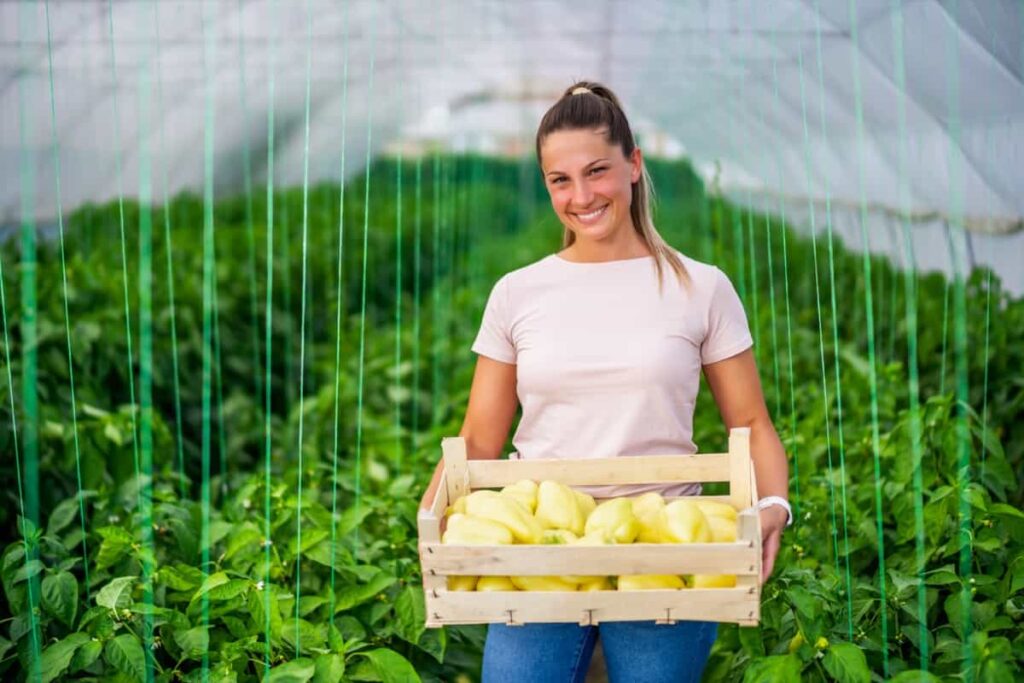
- Most Common Greenhouse Type in Sweden: Sweden’s most commonly utilized greenhouse is the even-span greenhouse. This design offers a uniform structure and efficient use of space. It provides an optimal balance between cost-effectiveness and productivity, making it a popular choice among farmers.
- Greenhouse Management: To ensure successful greenhouse agriculture, precise management practices are essential. Key management aspects include:
- Maintaining proper temperature levels through ventilation, shading, and heating is crucial for crop health and growth.
- Implementing efficient irrigation systems, such as drip irrigation, helps deliver water precisely to plants, reducing water wastage.
- Regular monitoring and prompt action against pests and diseases are vital to prevent crop damage and ensure quality produce.
- Proper fertilization and nutrient supplementation are crucial for healthy plant growth and high yields.
- Selecting suitable crops based on the greenhouse type and prevailing climate is vital for maximizing productivity.
Greenhouse Farming Techniques in Sweden
Greenhouse farming in Sweden has evolved with modern approaches and innovative techniques, enabling efficient cultivation of crops in controlled environments. Advanced climate control systems, sustainable energy solutions, hydroponics and aeroponics, vertical farming, smart irrigation, integrated pest management (IPM), high-tech monitoring, climate-adapted crop selection, nutrient recycling, and controlled release fertilizers are all essential in ensuring optimal growing conditions for various crops.
These technologies minimize waste and ensure a closed-loop system for sustainable agriculture. Vertical farming, which stacks crops in layers, maximizes growing capacity, and harvests more produce in smaller footprints. Smart irrigation techniques use sensor-based technology to assess plant needs accurately, preventing water wastage and ensuring hydration.
Integrated pest management (IPM) uses beneficial insects, traps, and natural predators to minimize environmental impact while safeguarding crops. High-tech monitoring utilizes IoT devices and AI-powered systems to monitor greenhouse conditions remotely. Climate-adapted crop selection, nutrient recycling, and controlled-release fertilizers optimize plant nutrient uptake, enhancing efficiency and minimizing nutrient runoff.
In case you missed it: Growing Green Futures: A Guide to Greenhouse Farming in Ethiopia
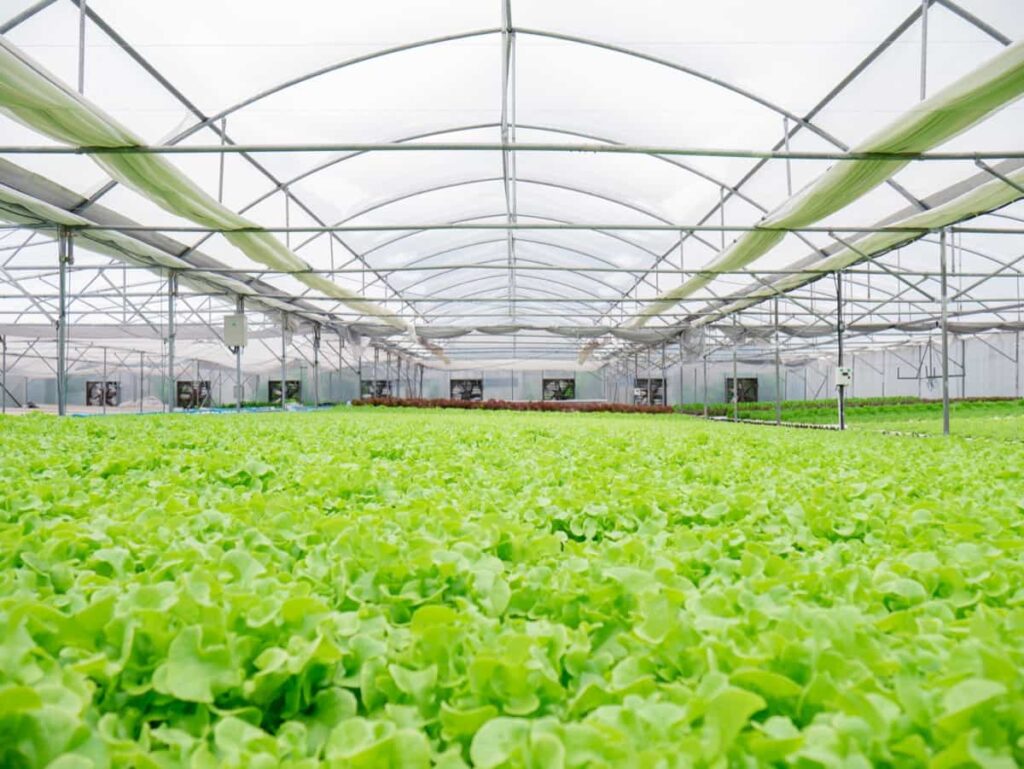
Climate Control Systems for Sweden’s Greenhouses
Climate control systems in Sweden cater to the country’s diverse climate zones, ensuring optimal growth conditions and minimizing energy consumption. These systems include temperature regulation, humidity management, light optimization, CO2 enrichment, energy efficiency, and water management. Temperature settings are calibrated in southern regions for a warm and consistent environment, while northern regions require more sophisticated heating techniques to protect plants from cold temperatures.
Humidity levels are controlled to prevent excessive moisture, while ventilation and dehumidification mechanisms are employed in drier northern areas. Light optimization is achieved through supplemental lighting, such as energy-efficient LED technology, which reduces electricity consumption while providing adequate light for plant growth.
CO2 enrichment enhances photosynthesis, leading to higher yields in regions with shorter growing seasons. Energy efficiency is prioritized through smart technologies like automated climate sensors and precision control algorithms, reducing energy waste and operating costs. Water management is also crucial, with drip irrigation and recycling techniques incorporating water scarcity concerns to minimize water consumption while maintaining optimal moisture levels for crops.
Pest and Disease Management in Sweden Greenhouse Farms
Over 70% of Swedish greenhouse farms use integrated pest management (IPM) techniques, combining biological, cultural, and chemical control methods. Beneficial insects like ladybugs and predatory mites combat harmful pests, reducing the need for chemical pesticides. Insect-proof screens have reduced pest infestations by 50%, contributing to sustainable practices.
Advanced technologies like automated monitoring systems and AI-based disease detection are gaining popularity. In the past five years, chemical pesticide usage has been reduced by 30%, promoting safer and healthier produce. Local research institutes collaborate with greenhouse farmers to develop disease-resistant crop varieties, ensuring long-term industry sustainability. Farmers are encouraged to maintain strict hygiene protocols and follow quarantine regulations.
Greenhouse Automation Technologies in Sweden
Greenhouse automation technologies in Sweden are revolutionizing modern agriculture by integrating smart technologies to optimize and streamline greenhouse operations, ensuring optimal conditions for plant growth and maximizing productivity. Sweden boasts many greenhouses with automation technologies, facilitating controlled and efficient crop cultivation. The adoption rate of greenhouse automation technologies is steadily increasing, with many farms and horticulturists implementing these systems.
Key technologies in Swedish greenhouses include climate control systems, irrigation management, and precision monitoring devices. All are interconnected through Internet of Things (IoT) technology. Climate control systems ensure precise temperature, humidity, and CO2 regulation, creating the ideal environment for plant growth throughout the year.
Smart irrigation systems optimize water usage, reducing waste and promoting sustainable practices. Greenhouse automation emphasizes energy-efficient practices like renewable energy sources and natural sunlight. Companies providing greenhouse automation technologies in Sweden include Agrokraft AB, GreenTech Sweden, SmartFarm Systems, EcoGrow Solutions, AgriTek Nordic, and GrowMotion AB.
Agrokraft specializes in innovative solutions tailored to individual farm requirements, while GreenTech Sweden offers a wide range of automation products. SmartFarm Systems focuses on sustainability, while EcoGrow Solutions promotes organic farming and resource-efficient greenhouse operations.
In case you missed it: High Yield Hybrid Tomato Varieties in India: For Winter, Summer, and Rainy Season
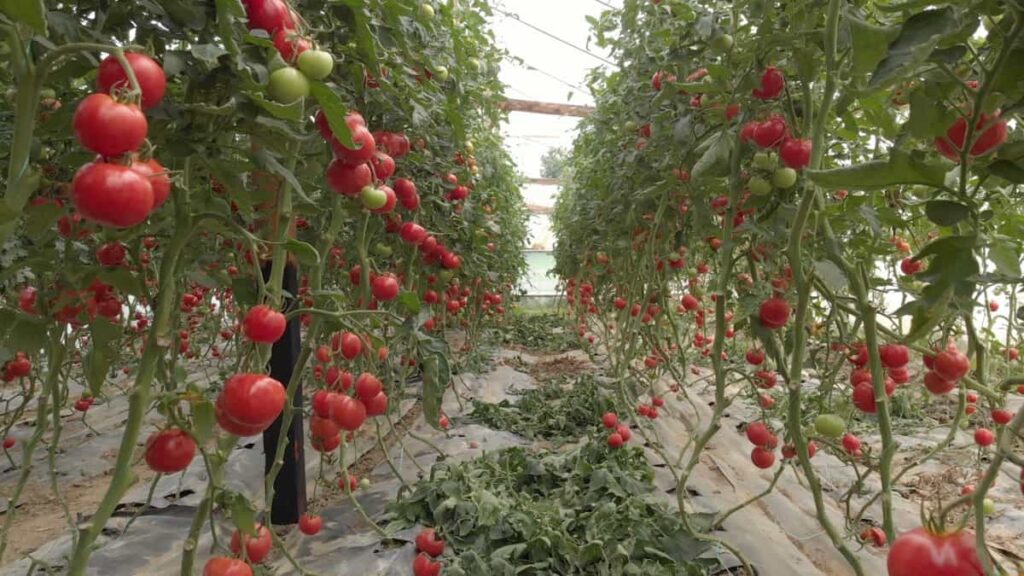
Energy-efficient Practices in Sweden Greenhouse Farming
Swedish greenhouse farming practices include LED lighting systems, climate control systems, high-quality insulation, geothermal heating, rainwater harvesting, solar panels, and precision irrigation systems. LED grow lights provide optimal lighting conditions for plant growth, consuming less energy than traditional sources. Climate control systems, such as automated ventilation, cooling, and heating, maintain ideal temperature and humidity levels.
Insulating materials like double-layered glazing and thermal screens minimize heat loss during colder months, reducing the need for excessive heating. Geothermal heating systems use renewable energy, while rainwater harvesting reduces reliance on municipal water supplies and energy consumption. Solar panels generate electricity to power various operations, such as lighting, ventilation, and irrigation, lowering greenhouse energy demand.
Precision irrigation techniques like drip and micro-sprinkler systems target water delivery to plant roots, minimizing water wastage and energy in water distribution. Common equipment for successful implementation includes LED grow lights, climate control systems with sensors and automation, double-layered glazing and thermal screens, geothermal heat pumps, rainwater collection and storage tanks, solar panels and inverters, and drip and micro-sprinkler irrigation systems.
Government Regulations for Greenhouse Farming in Sweden
Following key regulations and steps is essential when starting a greenhouse farm in Sweden. These include checking zoning and permits, adhering to environmental regulations, choosing suitable crops, focusing on energy efficiency, understanding labor and employment laws, maintaining food safety standards, and seeking financial support and subsidies. Zoning regulations in Sweden may have specific restrictions or requirements for agricultural activities, so obtaining permits from local authorities is crucial.
Environmental regulations include proper waste disposal, efficient water usage, and responsible use of fertilizers and pesticides. Crop selection and plant health are also crucial, with disease-resistant varieties being preferred to promote sustainable farming practices and a safe food supply. Energy efficiency is essential, with renewable energy sources and energy-saving technologies reducing carbon footprints and operating costs.
Labor and employment laws must be understood to ensure fair treatment of workers and a positive work environment. Food safety standards are a top priority in Sweden, and greenhouse farmers must follow strict guidelines to ensure the safety and quality of their produce. Regular inspections and hygiene practices are essential for meeting these standards. Financial support and subsidies are available to help new farmers establish their businesses.
Research and training are essential before starting a greenhouse farm, with best practices, workshops, and guidance from experienced farmers improving the chances of success. The Swedish Board of Agriculture (Jordbruksverket) oversees agricultural matters in Sweden, including greenhouse farming. They provide farmers with information, support, and guidelines, ensuring compliance with government regulations and promoting sustainable agricultural practices.
In case you missed it: How to Make Rose Plants Bushy and Flowers Bigger: Propagation, Fertilizers, Pruning, Planting, and Care
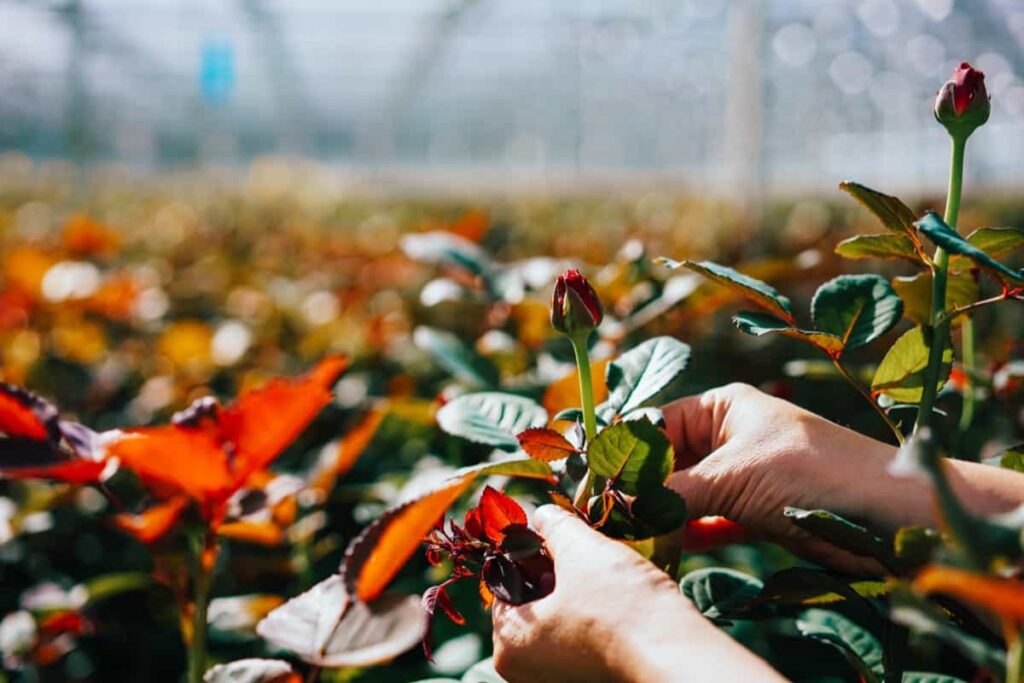
Market Trends and Opportunities in Sweden’s Greenhouse Farming
Sweden’s greenhouse farming sector has experienced a significant surge in demand over the past decade due to growing consumer awareness of sustainable and locally sourced produce. Vegetable cultivation dominates the market, driven by consumers’ preference for fresh and pesticide-free vegetables. The industry has embraced advanced technologies like automated climate control, hydroponic systems, and artificial lighting to enhance productivity and optimize resource utilization.
Organic produce is gaining traction. Consumers are increasingly seeking chemical-free and environmentally friendly products. Sustainable practices, such as integrating renewable energy sources and water recycling systems, are also gaining traction. The industry’s steady growth rate of approximately 5% annually is projected to continue over the next few years. Government support, export opportunities, and urban farming drive growth.
The floriculture market offers untapped potential, as cultivating flowers in greenhouses can cater to the growing demand for local and international decorative plants. Research and development opportunities are also available, with collaborations with restaurants and retailers providing a direct supply of greenhouse produce. Additionally, greenhouse farms can explore opportunities in agri-tourism and educational programs, creating additional revenue streams and promoting sustainable farming practices.
New Challenges for Organic Greenhouse Horticulture in Sweden
Swedish consumers increasingly favor organic food, and the government aims to boost food sovereignty and raise of organic food in public meals from 36% (2017) to 60% by 2030. However, there is a significant gap between the demand and production of organic vegetables. Only 4.9% of Sweden’s greenhouse area is used for organic production, mainly in containers and confined beds.
The recent European regulation revision requires a shift towards production in natural soil, impacting organic greenhouse horticulture. Phasing out confined beds and implementing soil-bound systems with crop rotations and fertility maintenance pose challenges due to climate constraints and greenhouse construction limitations.
In case you missed it: Exploring the Rise of Greenhouse Farming in Bangladesh: Boosting Crop Yields
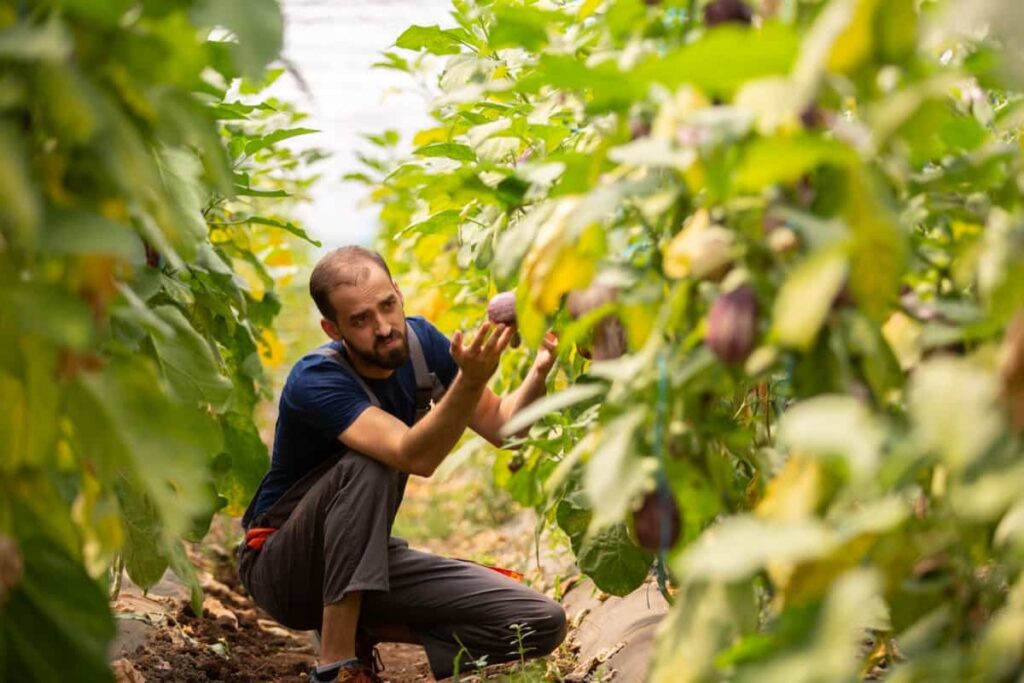
Conclusion
Growing Green reveals the key to successful greenhouse farming in Sweden lies in embracing sustainable practices. Greenhouse farmers can thrive by adopting renewable energy, water recycling, organic pest management, and prioritizing local markets while preserving the environment for future generations.
- Aquaponic Farming at Home: A Step-By-Step Guide
- Profitable Village Farming Business Ideas in 2024
- High-Yield Aquaculture: Fast-Growing Fish for Farming
- Effective Fish Pond Construction Techniques for Beginners
- Irrigation and Water Management in Pineapple Farming
- Blossom to Harvest: Mastering Flowering and Pollination in Papaya Farming
- Pig Fattening Essentials: From Selection to Sale for Beginners
- Raising Wagyu Cattle: A Complete Guide for Premium Beef Production
- Soil Types and Their Water Holding Capacity
- Optimizing Irrigation Schedules for Coconut Groves for Enhanced Yield
- Espresso Your Garden: Coffee Grounds for Healthier Acid-Loving Plants
- The Best Soil Mix for Snake Plants: How to Mix Your Own Snake Plant Soil
- Green Thumb Success: Expert Tips for Cultivating Greenhouse Beans All Year Round
- Bloom All Year Round: The Ultimate Guide to Indoor Hyacinth Care
- Eco-Friendly Gardening: How to Make Liquid Fertilizer from Kitchen Waste
- Ultimate Guide to Grow Anise in Pots: Explore Seed Propagation to Harvesting
- Guide to Raising Chester White Pigs: Discover Breed Facts to Growth Management
- Mastering the Elegance: The Ultimate Guide to Weeping Cherry Tree Care, Planting, and Maintenance
- Ultimate Guide to Planting Garlic in Grow Bags: Growing Strategies for Beginners
- How to Fix Spider Plant Leaf-Related Problems: Natural and Organic Remedies
- 10 Reasons Why Your Tulsi Plant is Shedding Leaves: Home Remedies and Solutions
- Optimizing Growth and Yield: The Advantages of Palm Bunch Ash Fertilizer
- Utilizing Neem Oil Extract as a Natural Pesticide for Hydrangea
- From Soil to Harvest: Various Ways in Which Farmers Can Use AI Tools
- Steps to Encourage and Induce Citrus Flowers: A Comprehensive Guide
- How to Fix Snake Plant Leaf-Related Issues: Natural and Organic Remedies
- Transform Your Garden into a Fragrant Oasis with Raat Ki Rani (Night Blooming Jasmine)
- Discover the Ideal Chicken Breeds for Philippine Farms
- How to Create a Poultry Egg Farm Business Plan for Profits
- Grow Lemon Cucumbers Like a Pro: Insider Techniques for Bountiful Yields
- Ultimate Guide to Caring for Your Pink Princess Philodendron: Tips for Thriving Variegation
- Areca Nut Profit Per Acre: Calculating Yield and Cost of Cultivation
- How Kaveri Chicken is Becoming a More Profitable Breed in Indian Backyards
- Transform Your Barn: 9 Steps to Convert a Horse Stall into a Chicken Coop
- Exploring Suffolk Sheep Disadvantages with Limitations and Challenges
- Guide to Solving Potted Lemon Tree Problems: How to Revive Lemon Tree in Containers
